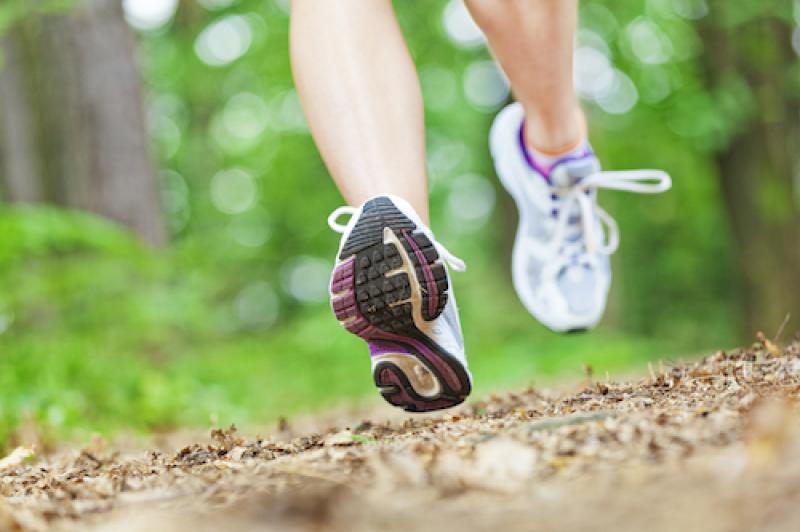
Shin splints. Causes and helpful hints
Shin splints is one of the most common reasons for exercise-induced leg pain.
It does not imply a specific diagnosis, but rather the presence of pain over the shin. Specific anatomical and pathological differences exist that lead to differential, and more specific, diagnoses.
The pain felt can be due to problems of the muscles, the bone, or the attachment of the muscles to the bone. Therefore based on your specific diagnosis, management and treatment will vary.
Access our PHYSIO's GUIDE on dealing with 9 of the most common Sporting Injuries
The three main pathologies that can cause shin pain are:
1) Medial tibial stress syndrome:
Medial tibial stress syndrome occurs when overuse causes irritation and microtrauma to the soleus (our deep calf muscle) at the attachment to the shin bone. Repetitive stress can also cause irritation to the tibialis posterior muscle, and inflammation of the periosteum (the connective tissue that covers the bone.) This is what most people are talking about when they refer to ‘shin splints’ as their diagnosis. Patients complain of a diffuse pain along the inside of the shin, which usually decreases with warming up so they are able to complete the rest of their training. However pain returns after finishing training and is worse the next morning.
2) Medial tibial stress fracture:
This is most common in athletes involved in running, jumping and impact sports. The incidence increases if play is on a rigid, unforgiving surface. It results as a continuum from increased bone strain, to stress reaction, to finally a stress fracture. Pain has often developed gradually, and usually correlates with an increase in training. Pain worsens throughout a training session and often is present at rest or a night. There is often a focal pain when palpating the shin bone, and a bone scan or MRI can accurately confirm the fracture (an X-ray will often not show it in the early phase.)
3) Exertional compartment syndromes
The lower leg has a number of muscle compartments, each enveloped by a thick fascia which has limited flexibility. Increased blood flow to the muscle with exercise causes the muscle to increase in size- hence increasing the pressure within compartments. This can lead to decreased blood flow and tissue perfusion, which in turn causes pain. The athlete complains of an increasing achy pain and tight sensation with exercise, but these symptoms usually have disappeared within a few minutes of rest, and are absent at night. Treatment is initially conservative; with deep massage therapy, dry needling, lowering the heel in a shoe, and reducing exercise load. However if this is unsuccessful, surgical release may be necessary to release the fascia surrounding the compartment, with 80-90% of people being able to return to their previous level of sport.
Remember the foundation of treatment starts with an accurate diagnosis.
Proposed Risk Factors
Predisposition factors include abnormal biomechanics, (for example pronated feet) ankle instability, weak soleus or tibialis posterior muscles, poor pelvic and knee stability, stiff ankle joints, inadequate shoes, body mass index, inadequate calcium intake or recent growth spurts.
Physiotherapy treatment addresses
Symptomatic relief, (rest, ice) identification of risk factors and treating the underlying pathology are essential for effective management. Regular calf stretches and releases are integral. Increasing the strength and endurance of the soleus/tibialis posterior, controlling over-pronation,taping, orthotic prescription and promoting adequate shock absorption via insoles and new shoes is successful treatment. Committing at least one day per week to a pool/cycling/cross-fit session is shown as effective management of medial tibial stress syndrome and also at decreasing load to reduce the risk of medial tibial stress fractures. Assessment and treatment of poor core and pelvic stability.
Helpful Hints
Short term symptom relievers only will not get rid of the problem long term. Common technique faults include slow step rates and over striding need to be considered. Adjusting your step rate towards the more desired level ( 170-190 steps per minute) can always help reduce the overload on landing. A quicker shorter step rate needs to be aimed for in many cases. Calf, quads and gluteal strengthening is essential to any runners strength and conditioning program. e.g. you should be able to complete 25-30 single calf raises on a step with each leg.
Continuing to push through shin pain can have dire effects on not only your sporting performance and event participation, but also cause further damage in the long term. See our physios for an accurate diagnosis and management to maximise your ability this upcoming running season. Call us on 83462000 or email to info@hindmarshphysio.com.au for an appointment soon.
Book here for a running assessmentBlog Archive
Contact Us
Hindmarsh Physiotherapy & Sports Injury Clinic
281 Port Road
HINDMARSH SA 5007
Appointments
